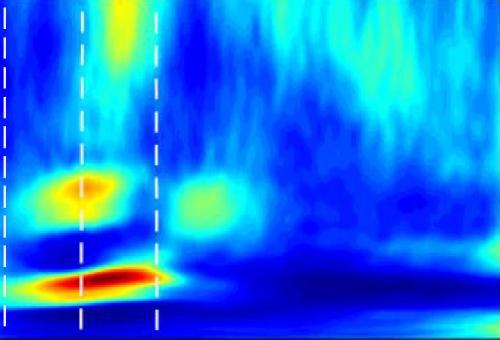Regions of the brain can "dance" on their own but when they work together they fall in step to a well-timed choreography: according to a study just published in PLOS Biology, when a rat is engaged in a sensory recognition task and needs to make a spatial choice based on previous knowledge, the sensory, motor, and memory regions of the animal's brain (but similar mechanisms are also likely to exist in the human brain), make the rhythms of electrical activity coherent with each other. The study's co-first authors are Natalia Grion and Athena Akrami, research scientists at the International School for Advanced Studies (SISSA) of Trieste, and the study leader is Mathew Diamond, professor of cognitive neuroscience and deputy director of SISSA.
The brain's electrical activity exhibits multiple characteristic "rhythms". One of the most pervasive is theta oscillation, fluctuations of electrical activity with a typical frequency between 5 and 12 Hz. In rats, for example, it is seen in the hippocampus, a structure engaged in memory processes. By what might seem a strange coincidence, frequencies between 5 and 12 cycles per second are also distinctive of a rat behaviour known as "whisking". Rats explore the world through touch, a sense as useful to them as vision is to us. To palpate surfaces they use their vibrissae, the long hairs on their snout, sweeping them back and forth over objects: whisking is this sweeping movement of their whiskers.
Scientists have asked themselves whether this suspicious coincidence of rhythms in the theta range is by chance or the result of some linkage within the brain. A first series of experiments conducted by an American group a few years ago did not confirm the latter hypothesis, showing instead that when rats explore the environment with their whiskers the rhythms of the different regions were no more synchronized that would be expected of independent oscillators; they did not seem to be linked.

The role of memory
Diamond and his group at SISSA were not convinced that this result conclusively disproved the synchrony hypothesis: perhaps the task used in those experiments was not the best suited to eliciting coherence. "The original task did not require rats to tap their memory and to make a spatial choice, two operations which engage the hippocampus, a region that prominently exhibits the theta rhythm", explains Diamond. "In our experiments we added a component: the rats had to explore an object, identify it, and then make a decision to turn left or right based on the experience gained in previous training sessions".
In this new series of experiments Diamond and co-workers found the connection: the oscillating rhythms of the vibrissae and the theta waves in the hippocampus became phase-locked, for about one second, just before the rat made its choice. In addition, these rhythms were also phase-locked with the activation of the sensory cortex (which collects tactile information), an intermediate processing station between the vibrissae and the hippocampus.
The results were received with enthusiasm by the author of the previous study, David Kleinfeld, of the University of California San Diego, who was commissioned by PLOS Biology to write a commentary (together with Martin Deschênes, of Laval University in Quebec City in Canada, and Nachum Ulanovsky, of the Weizmann Institute of Rehovot in Israel) on Diamond and colleagues' paper.




Comments